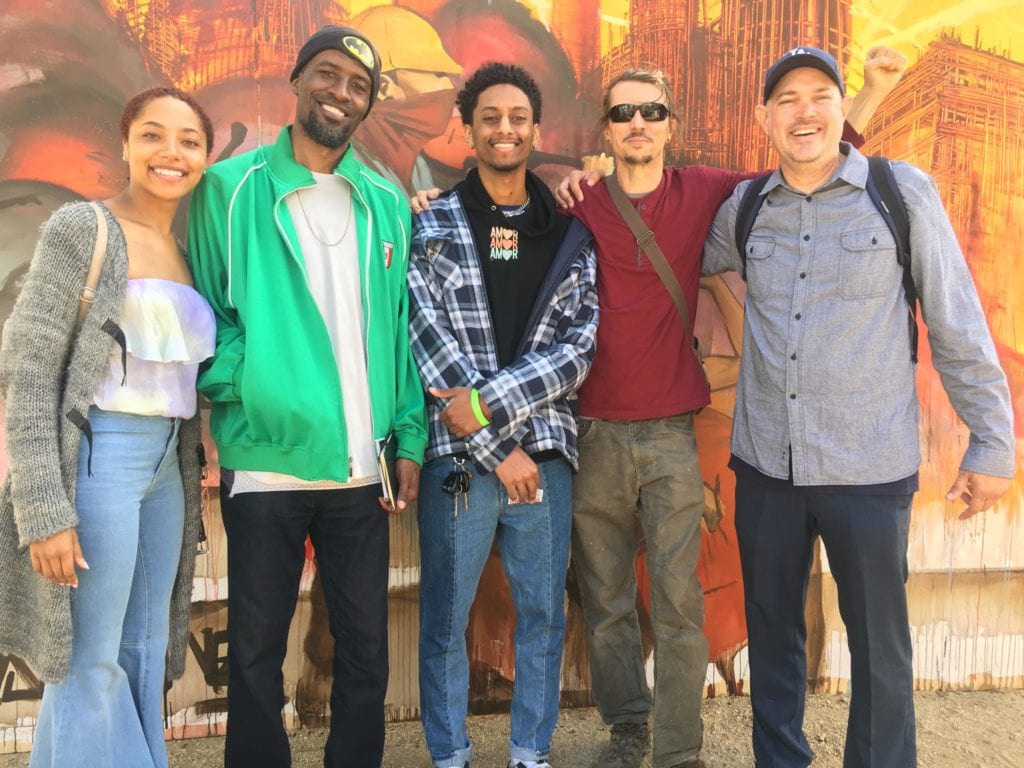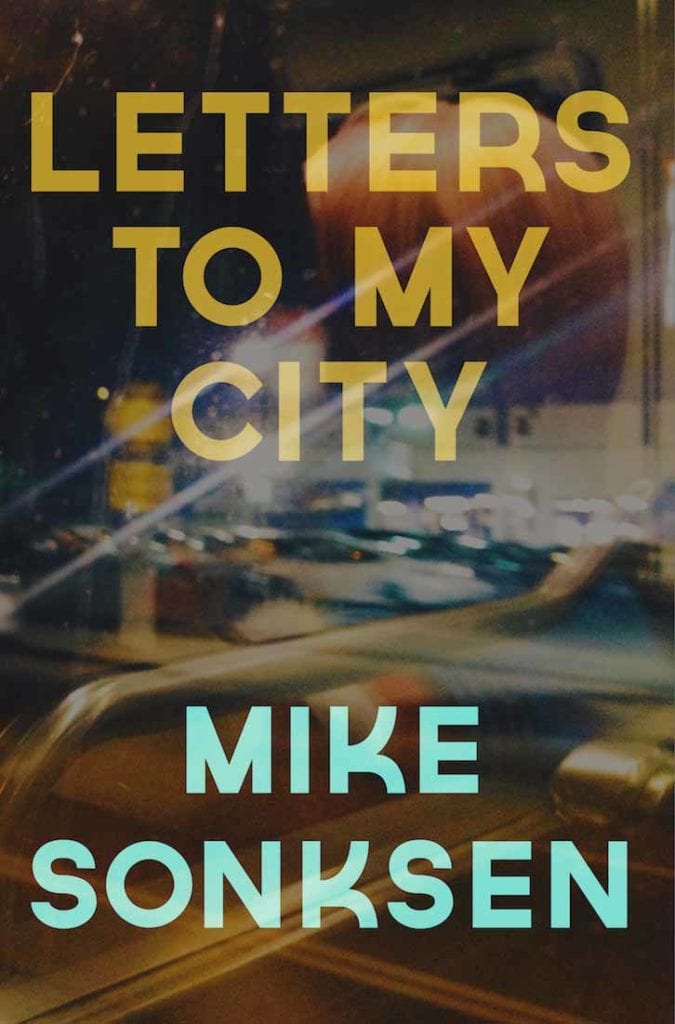
Memory and perspective are a funny thing. I’m in my 20s now, and I feel ashamed to say I didn’t think the beloved L.A. poet Mike Sonksen was a good teacher when I was a student in his class at View Park Preparatory High School.
In hindsight, a more accurate description would be that his teaching style baffled me. His poetry class always happened in the afternoon. After a grueling morning of 90-minute classes, Sonksen’s relaxed style and casual behavior management was no match for the pent-up teenage energy of our small school on Crenshaw Boulevard. He would stand beaming in front of us as a din of laughter, shouting and joking swirled around him: students sitting on the desks and on the floor, uniform ties loosened, no paper or pencil in sight. I remember feeling sorry for him.
“I’m alive in Los Angeles! I’m alive in Los Angeles! I’m alive in Los Angeles!” Sonksen started reciting one day, his voice booming over the classroom noise. It cracked like an egg and spilled over the room. We were in awe as he continued to perform the poem for which he’s most well-known. Sonksen revealed his love of our city to us through verse that he had created from his own heart – and it captivated us.
He begins his newest book, “Letters to My City,” in much the same way. The poem “I’m Still Alive in Los Angeles” is a perfect opening to this book’s combination of poetry and prose exploring an impressive range of topics. The author’s praxis is ever present in his essays and stanzas that serve as odes to working-class heroes, neighborhood haunts, cultural enclaves and literary giants that call L.A. home. The work of a cartographer and a treasure hunter, “Letters to My City” is littered with literary maps, demographic charts, landmarks and jewels of inspiration.

Sonksen is an expert at seeing the sleeping giants that can get buried under ever-rising new condos. I hesitate to mention that Sonksen is white and taught in a mostly black school. Let’s get one thing straight: This wasn’t “Freedom Writers.” Sonksen already had a bebop style, a Jack Kerouac, Los Angeles-native-inspired free spirit. We already knew we could rap and write, but we needed new inspirations, and Sonksen had just that in what seemed to be an endless library of poets, writers and journalists, many he knew personally and brought into class. Many of these writers were black and Latinx, reflecting the students in his classes.
He has refined his teaching style in the 10 years since I took his class, yet the accompanying learning guide to “Letters to My City” echoes his earlier teaching mission. Instead of trying to silence our insistent chitchat, he would listen, then pick out phrases and dips in the conversation where he fit, bringing poetry along with him.
Time and place are important to Sonksen. He consistently works to answer questions such as Who is here now and who was here before? “Letters to My City” and its accompanying guide invite readers, particularly adults and teens, to become literary photographers. Parents can use the poetry and knowledge they glean from it to inspire a love in their younger children.
The book ends much like all of my meetings for lunch with Sonksen. Once, we were in Little Tokyo, scarfing down noodles and talking about the architecture of downtown L.A. As we wrapped up, Mr. Mike the Poet shoved a canvas bag with the words “Poets & Writers” scrawled across the front, filled with even more books, into my hands.
Discover more at theaccomplices.org/portfolio/letters-to-my-city-by-mike-sonksen.

























